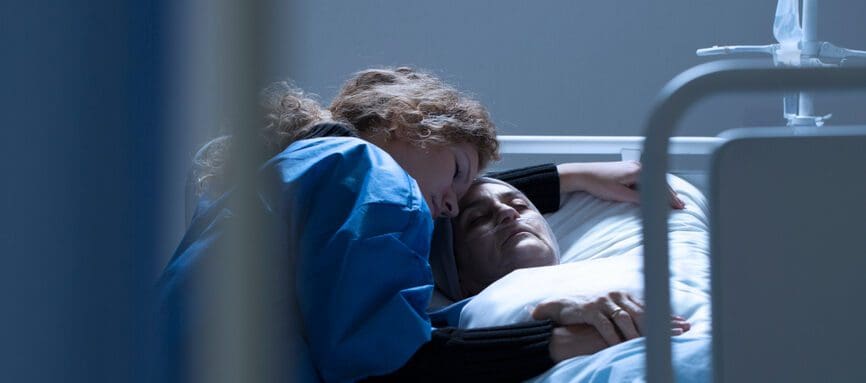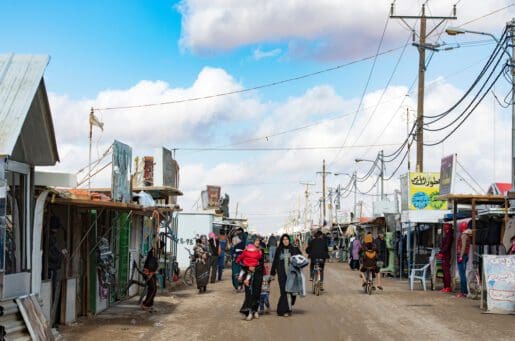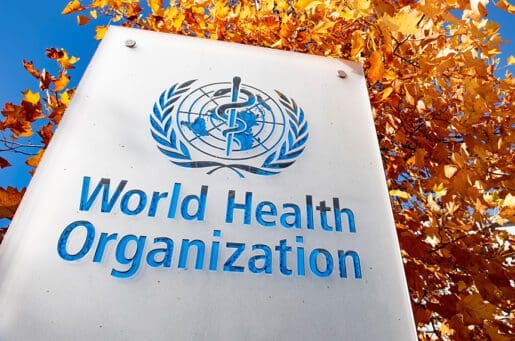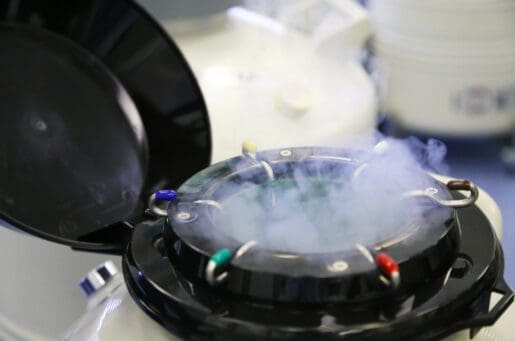Bioethics Forum Essay
Hospice and Medical Aid-in-Dying: Addressing an Unethical Disconnect
Most patients who die with medical aid in states where the practice is legal are enrolled in hospice, but coordination between those providing hospice care and those providing medical aid-in-dying (MAiD) is woefully inadequate. Many hospice facilities have policies against supporting patients who request MAiD and do not disclose these policies to prospective patients, even in states where disclosure is required. Knowing what interventions are available is a fundamental component of ethical medical care, especially at the end of life when selection of an appropriate hospice can make a big difference.
Reports from California and Washington describe patients struggling to find providers, pharmacies, and hospice facilities that will accept them after they have requested MAiD. We recently completed a study that illuminates the scope of this problem by assessing compliance with a California law, S.B. 380, that requires health care facilities to post their MAiD policies on their websites. Our research reveals that roughly 60% of hospice facilities fail to comply with the law. Among the facilities that made their policies publicly available, we found significant variations in the clarity of communication about how MAiD requests would be addressed.
These findings are concerning because of the interconnectedness of MAiD and hospice care. In 2021, 91.6% of Californians who died following ingestion of aid-in-dying drugs were enrolled in hospice or palliative care. Washington and Oregon have reported similar data. It seems that many patients enroll in hospice after they first request MAiD – a Kaiser Permanente study in Southern California found that as few as 48% of patients were enrolled in hospice when they first requested MAiD. Patients deserve to know whether a hospice facility will support their wishes.
Our research identified other concerning information. Numerous hospices require patients who wish to pursue MAiD to be discharged and transferred to another facility. These patients risk delays in accessing MAiD, extending their suffering. In addition, two facilities in our review used inaccurate or misleading terminology for MAiD. One facility used the term “provider-hastened death” and stated that it encompasses euthanasia. Euthanasia is different from MAiD and is illegal throughout the U.S. Preliminary data from the next phase of our research, which reviews policy transparency of health care facilities in all jurisdictions in the U.S. where MAiD is legal, has identified the same problems found in our California study.
We urge all health care entities in jurisdictions where aid-in-dying is legal to post their aid-in-dying policies in a readily identifiable location on their websites. Policies should use accurate, unbiased, easy-to-understand language. Disclosing this information on facilities’ websites is necessary, but not sufficient. It leaves the burden of responsibility on an individual to know where and how to find it. Facilities should take extra steps to ensure that this information is not merely posted but is received and understood by patients. One way this can be accomplished is to require disclosure of a MAiD policy during admission discussions with prospective patients. Another option is providing patients and their family members with explicit direction to the online policy at the time of hospice intake with nursing staff. This would ensure justice and equity in access to information.
As our research and advocacy continue in this area, we welcome further debate and discussion on improving access to accurate and transparent information for patients considering “life-ending” care.
Gianna R. Strand, MS, DBe, is a postdoctoral researcher in health policy and research ethics. She is the director of research at the Completed Life Initiative. @completedlife
David N. Hoffman, JD, is an assistant professor of bioethics at Columbia University and a clinical assistant professor of bioethics at Albert Einstein College of Medicine. He is a board member of the Completed Life Initiative. @ethicsoncall
Karin Sobeck, RN, MSN, MSBe, is a transplant coordinator and faculty teaching associate at Columbia University, and former chairperson of the National Hospice Organization.
Sarah J. Kiskadden-Bechtel, MSBe, is the program director at the Completed Life Initiative and a faculty teaching associate at Columbia University. She is editor-in-chief emeritus of the journal Voices in Bioethics. @skb_bioethics
All authors are members of the Empire State Bioethics Consortium. @NYSBioethics













I have been monitoring San Diego hospice websites for compliance with California’s SB 380 for the Hemlock Society of San Diego (HSSD) (and sending hospices letters from HSSD requesting compliance). I have found that fewer than 10 out of 95 San Diego county companies licensed as hospices by the California Department of Health
have posted statements on their website regarding California’s End of Life Option Act.
None (except 3 local hospitals) have posted a true, clear policy, such as one would find in a Policy and Procedure Manual.
What is sad is that two of the oldest licensed hospices in San Diego County, accredited by the Joint Commission, have posted policies that are so vague they are useless to the consumer.
Many hospices are now owned by private equity firms with up to 8 levels of ownership, making it hard to find an individual responsible for the operation of a hospice. Even more alarming are the number of new San Diego county hospice licenses issued in 2021 (38) , before the California moratorium on hospice licenses went into effect in 2022. Many of these newly licensed hospices appear to be started by business, not medical, professionals.
According to the Medicare Payment Advisory Commission, for-profit hospices had Medicare profit margins of 19% in 2019, compared with 6% for nonprofit hospices.
In January, 2023 four national hospice associations submitted recommendations to the Centers for Medicare & Medicaid Services good quality improvement measures, including enforcement actions against non-operational hospices.
https://leadingage.org/wp-content/uploads/2023/01/Hospice-Program-Integrity-Ideas_Hospice-Industry-Consensus-Final-1.13.23-.pdf
California has already enacted some of these recommendations.
PUBLIC DECLARATION
OF END-OF-LIFE POLICIES.
Even where the right-to-die has become law,
some hospitals, nursing homes, & hospices
decide they will NOT cooperate.
Some policies are based on religious principles.
What should potential patients do
in order to get the end-of-life care they desire?
Here is a compromise that might be accepted
by everyone giving end-of-life medical care:
Let each institution explain in its public information
exactly WHICH medical methods of managing dying
will be permitted by that organization.
Each of the following four
are offered in ALL modern medical facilities:
MMMD1: comfort-care only.
MMMD2: terminal coma.
MMMD3: ending curative medical treatments and life-supports.
MMMD4: giving up water.
Then each patient-and-family can carefully consider
which pathway towards death they find most appropriate.
When the patient is clearly dying,
then the medical efforts to prevent death
can be replaced with some combination of these four
Medical Methods of Managing Dying (MMMD).
About 50% of all deaths in advanced societies
now use these methods of managing dying.
And when a country (or state within a country)
creates a new right-to-die law,
that whole jurisdiction adds a NEW method of dying:
MMMD5: gentle poison.
All such new laws do allow
doctors, nurses, & (sometimes) medical institutions
to OPT OUT of Medical Assistance in Dying (MAiD)
or Voluntary Assisted Dying (VAD).
Therefore, all medical providers should
make clear to all potential patients
JUST WHERE THEY STAND with respect to
each possible pathway towards death.
>>>>>>>>>>>>>>>>>>>>>>>>>>>>>
Read more about making such public declarations
of the permitted methods of easing the process of dying:
LET ALL WHO PROVIDE
END-OF-LIFE MEDICAL CARE
DECLARE THEIR METHODS OF MANAGING DYING.
https://www.facebook.com/permalink.php?story_fbid=118206603795279&id=104763195139620
_______________________________________________
Ch. K (5) Problem with RTD—rev. 7-5-2023
Go to the table of contents for New End-of-Life Laws:
https://www.facebook.com/permalink.php?story_fbid=112807361001870&id=104763195139620
PUBLIC DECLARATION OF END-OF-LIFE POLICIES.
https://www.facebook.com/permalink.php?story_fbid=124826956466577&id=104763195139620
Letting patients know about MAID policy during admission conversations should be required (or least considered a “best practice”) for every hospice in states where it is legal. This still gives the individual hospice a choice about how — of if — they want to support it, while also making sure the patient is fully informed of their options. But sadly, many hospices have a “don’t ask, don’t tell” policy, which is a disservice to clients and their families, many of whom don’t know what MAID is, or that it is available in their state.